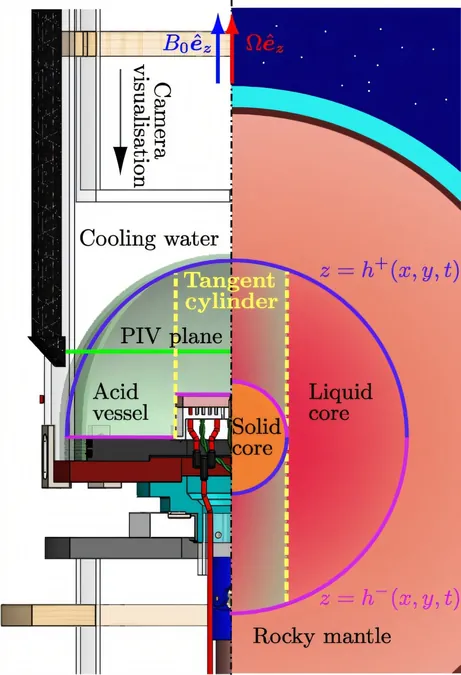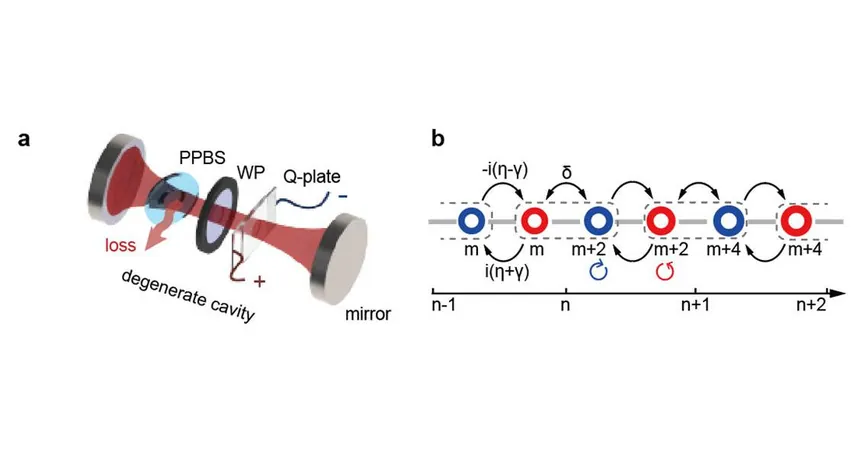
Groundbreaking Experiment Unveils How Earth's Magnetic Field Shapes the Flow in Its Core!
2024-11-06
Author: Jia
Introduction
In a fascinating new study, a team of physicists from Coventry University in the U.K. and the Laboratoire National des Champs Magnétiques Intenses in France has unveiled revolutionary insights into the dynamics of our planet's core. Their research, published in the prestigious journal *Physical Review Letters*, discusses the intricate ways Earth's magnetic field influences internal flow patterns, providing potentially game-changing explanations for longstanding discrepancies between theoretical models and satellite-based findings.
Historical Context
Historically, researchers have understood that Earth's inner core resembles a heated metallic sphere, while the outer core consists of a colder liquid metal layer, both of which are dynamically spinning. This spinning generates electric currents that ultimately create the planet's magnetic field. Despite this understanding, many models have overlooked the impact of the magnetic field on the flow patterns it produces—until now.
The 'Little Earth Experiment'
To address this gap, the scientists devised an impressive experimental setup known as the "Little Earth Experiment." Their apparatus emulates the conditions inside Earth by using a carefully engineered tank filled with a 30% concentration of sulfuric acid, all placed within a strong magnetic field created by the powerful magnet at the Grenoble High Magnetic Field Laboratory in France. This setup allowed them to accurately simulate the mechanics of Earth's interior in a controlled environment.
Methodology
In an ingenious approach to replicate real-world conditions, they heated the fluid in the tank from the center, while simultaneously cooling the upper hemisphere with a water-filled tank. Furthermore, adding tiny glass particles enabled the use of lasers to visualize and measure fluid dynamics precisely.
Findings and Implications
Their groundbreaking findings revealed the velocity and direction of fluid flow, which opens avenues for developing new, more accurate theories regarding Earth's internal motions. This could lead to significant advancements in our understanding of geophysics, including more reliable predictions related to Earth's magnetic field changes and its impact on various geodynamic processes.
Conclusion
As one of the authors, Alban Pothérat, stated, "Our experiments allow us to bridge the gap between theoretical predictions and what we observe in reality, providing a deeper understanding of the fundamental processes taking place beneath our feet." This research not only sheds light on the flows within Earth but also highlights the need for updated models that incorporate the complexities introduced by the planet's magnetic field. As scientists continue to delve into the wonders of our planet's inner workings, there’s no telling what other mysteries might soon be uncovered!
Looking Ahead
Stay tuned for more groundbreaking revelations as scientists unravel the secrets of Earth's core!



 Brasil (PT)
Brasil (PT)
 Canada (EN)
Canada (EN)
 Chile (ES)
Chile (ES)
 Česko (CS)
Česko (CS)
 대한민국 (KO)
대한민국 (KO)
 España (ES)
España (ES)
 France (FR)
France (FR)
 Hong Kong (EN)
Hong Kong (EN)
 Italia (IT)
Italia (IT)
 日本 (JA)
日本 (JA)
 Magyarország (HU)
Magyarország (HU)
 Norge (NO)
Norge (NO)
 Polska (PL)
Polska (PL)
 Schweiz (DE)
Schweiz (DE)
 Singapore (EN)
Singapore (EN)
 Sverige (SV)
Sverige (SV)
 Suomi (FI)
Suomi (FI)
 Türkiye (TR)
Türkiye (TR)
 الإمارات العربية المتحدة (AR)
الإمارات العربية المتحدة (AR)